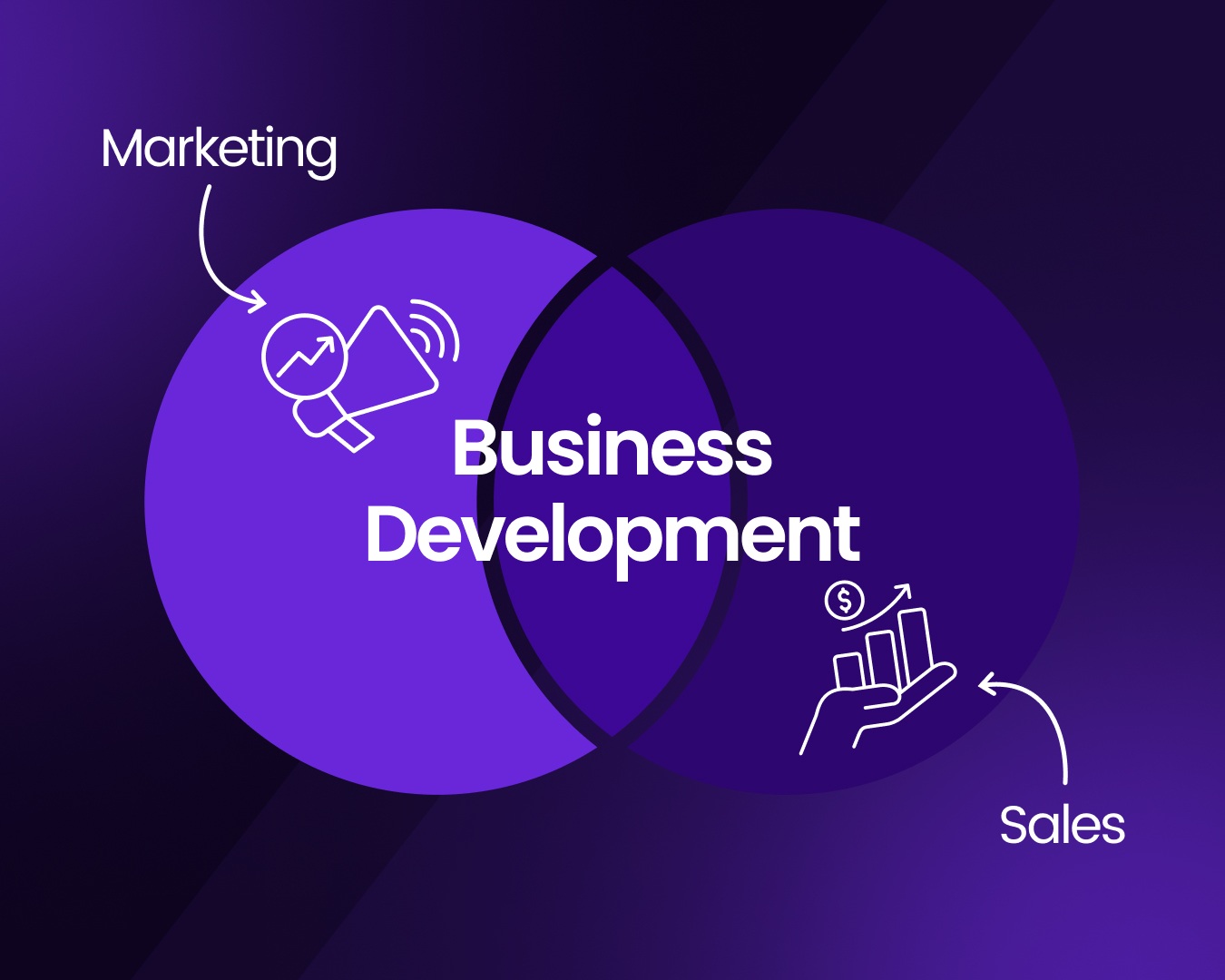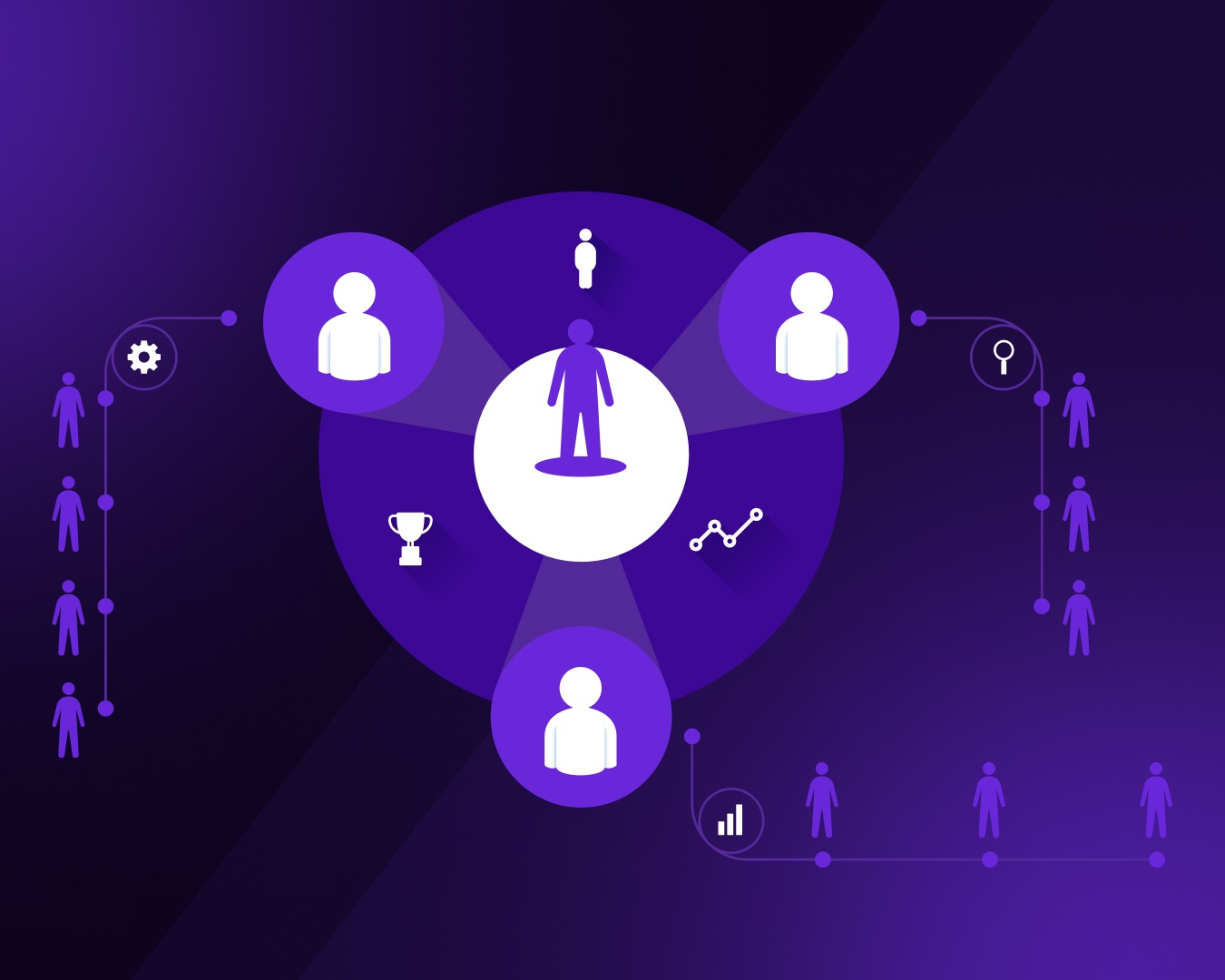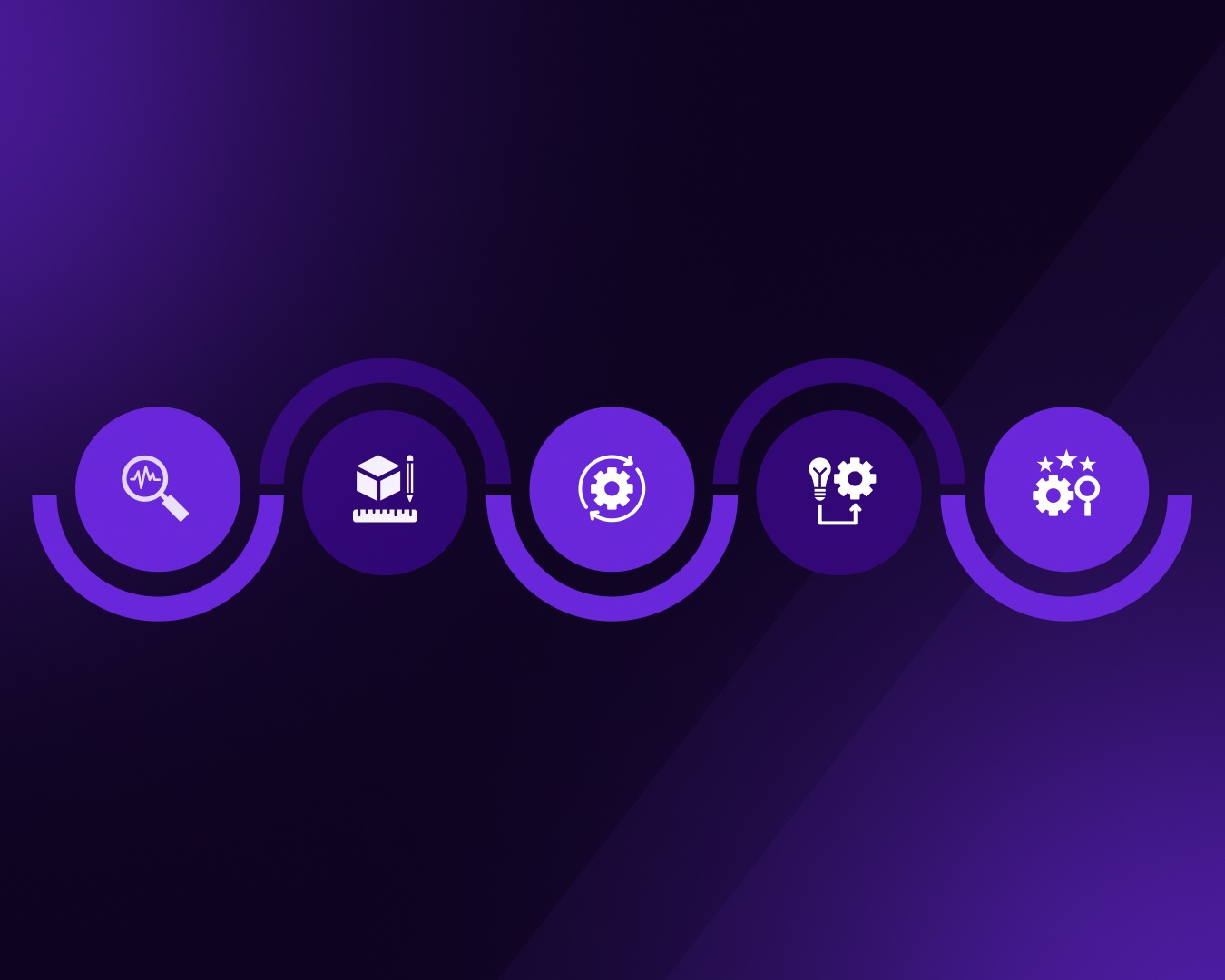“We know we need to grow, but our team is stretched thin already.”
I’ve sat across from countless marketing leaders at tech companies who share this exact frustration. Sound familiar?
Small B2B tech teams often juggle multiple priorities with limited resources. You’re expected to generate leads, nurture relationships, and drive revenue growth—all while managing your day-to-day responsibilities. It’s like being asked to build a house with just a hammer and a few nails.
But here’s the truth: with the right business development approach, your small team can absolutely excel.
The key lies in blending marketing and sales efforts into a cohesive strategy that maximizes every hour of work and every dollar spent. As highlighted by Forbes, developing an effective business development plan serves as a roadmap to achieve growth goals, especially for B2B tech startups facing challenges like increasing sales and building a strong market presence. Your lean team can create sustainable pipeline growth without burning out by focusing on high-impact activities and leveraging the right tools.
In this post, we’ll explore practical business development strategies designed explicitly for small B2B tech teams:
- Marketing-Sales Integration: How to create a hybrid approach that eliminates silos
- The 80/20 Rule in Action: Which BD activities actually move the needle
- Smart Outsourcing: Extending your team without breaking the bank
- Personalization at Scale: Using marketing automation without losing the human connection
- Building Your BD Playbook: Creating repeatable processes for consistent results
By the end, you’ll have a clear roadmap for implementing a business development strategy that works for your specific constraints and goals—whether you’re looking to enter new markets, build strategic partnerships, or simply generate more qualified leads with your existing resources.
Introduction to B2B Business Development
B2B business development strategy identifies and nurtures opportunities for company growth through new sales and strategic partnerships. The process encompasses:

- Prospecting potential customers
- Building meaningful business relationships
- Developing targeted value propositions
Success requires alignment between sales and marketing teams to create a seamless conversion funnel. This integrated approach enables companies to adapt to market changes and evolving customer needs while enhancing their overall market presence.
A strategic business development framework ultimately positions organizations for sustainable long-term growth in competitive environments.
Rethinking Business Development as a Marketing & Sales Hybrid
Cold calls and generic emails aren’t cutting it anymore. Most B2B buyers can smell a mass email a mile away, and your prospects are increasingly skilled at dodging outreach that feels impersonal or irrelevant.
What works better? Breaking down the walls between sales and marketing teams to create a unified approach to business development.
When sales and marketing teams actually collaborate rather than compete, magic happens. Your business model impacts decision-making at every level, including how these teams work together. Marketing brings strategic content and messaging that educates and nurtures prospects, while marketing strategies tailor approaches to specific client needs and evolving market conditions. The sales team brings the relationship-building skills needed to close deals. Together, they create a BD strategy greater than the sum of its parts.

The Three Pillars of Modern Business Development
The most effective BD strategies combine three core elements:
- Account-based marketing: Instead of casting a wide net, ABM focuses your resources on specific high-value accounts with personalized campaigns. This targeted approach ensures you’re not wasting time on poor-fit prospects.
- Demand generation: Create broader awareness through content, events, and thought leadership that pulls prospects toward you. This builds your pipeline while establishing credibility in your market.
- Relationship-building: Transform initial interest into lasting partnerships through consistent, value-driven interactions. This is where your team’s human touch becomes your competitive advantage.
By integrating these elements, even small teams can create a dynamic BD approach that feels cohesive to prospects while efficiently using limited resources.
Real-World Examples of Success
Consider a B2B tech company that successfully implemented this hybrid approach. By aligning their sales and marketing teams, they focused on high-value accounts through ABM while generating broader interest with targeted demand-generation campaigns. This dual approach helped strengthen client relationships and increase market presence. They tailored their sales pitch to resonate with their target audience, addressing their needs and challenges.
Another example is a SaaS provider that used relationship-building techniques to deepen connections with existing clients. This focus led to increased upsell opportunities and reduced churn rates. They created a cohesive strategy that drove significant revenue growth by integrating these efforts with their marketing campaigns.
Check out our B2B content marketing strategy guide for more insights on building a content marketing strategy that supports your BD efforts.
The 80/20 Approach to Business Development for Small Teams

When your marketing team consists of one or two people wearing multiple hats, efficiency isn’t optional—it’s essential. This is where the Pareto Principle (80/20 rule) becomes your best friend.
The principle is simple: roughly 80% of your results come from 20% of your efforts. For B2B tech companies, this means identifying and doubling down on your highest-impact activities.
As Hinge Marketing emphasizes, effective B2B marketing doesn’t require dozens of techniques—it demands the right ones. If you carefully select strategies that best reach, nurture, and convert your target audience, you ensure every resource invested delivers maximum return.
This same principle transforms your sales approach. High-performing sales teams analyze their conversion data to identify which activities truly drive results, then reallocate time and resources accordingly. By combining these insights with targeted marketing resources, your team can enhance lead quality, streamline the conversion process, and continuously adapt to evolving buyer behaviors—all without expanding headcount.
Focus on High-Impact BD Activities
Based on the 80/20 principle, here are the BD activities that consistently deliver the biggest bang for your buck:
- Warm outreach: Contacting people who’ve already shown interest in your offerings yields much higher conversion rates than cold outreach. This approach increases the likelihood of conversion while helping generate sales-ready leads.
- Strategic partnerships: Identifying companies with complementary offerings can open new avenues for growth by leveraging the strengths and networks of these businesses.
- High-intent engagement: Focus on interacting with leads actively seeking solutions like yours. This ensures your efforts are directed toward those most likely to convert.
Balancing Long-Term Relationship Building with Immediate Wins
While quick wins keep the lights on, sustainable growth requires building relationships that deliver value over time. The trick is finding the right balance.
Long-term relationships provide steady opportunities and lead to more sustainable growth. Focusing on existing customers is particularly valuable, as it’s a cost-efficient method for enhancing relationships and increasing value.
At the same time, immediate wins are necessary to maintain momentum and demonstrate the value of your BD efforts. Creating a framework that prioritizes activities based on their potential impact and urgency helps maintain this balance.
Using Data to Guide Your Focus
The best BD strategies are driven by data, not hunches. By analyzing customer behavior, market trends, and historical performance, you can identify which actions will most likely yield substantial results.
Tools like CRM systems, analytics platforms, and predictive modeling provide valuable insights into where to focus your marketing efforts, making your 80/20 approach even more effective.
Extending Your Reach: Agencies & Fractional Experts

There’s a point where even the most efficient small team hits a capacity ceiling. That’s when smart outsourcing becomes a game-changer for business development.
Extending BD reach through external resources offers significant advantages for small teams. Agencies and fractional experts bring specialized skills and additional capacity, enabling you to scale efforts without needing full-time hires.
When to Bring in Outside Help
While building an entirely in-house business development operation might seem ideal, it’s often impractical for resource-constrained teams. As Sopro highlights, partnering with specialized B2B business development services can strategically fill capability gaps while allowing your core team to focus on what they do best.
These external partnerships offer compelling advantages:
- They bring expertise in specific areas like sales development, content creation, and outbound campaigns
- They offer flexibility, allowing you to scale efforts up or down based on your needs
- They enable your internal team to focus on core activities and strategic relationships
The sales team plays a crucial role in working with these external resources, ensuring that leads nurtured and qualified by business development partners are effectively converted into customers.
Making Outsourcing Work
Setting clear expectations and providing the tools for success are essential when outsourcing. This includes:
- Defining your ideal customer profile (ICP)
- Creating detailed playbooks
- Developing messaging frameworks that align with your brand
- Providing comprehensive training on your products and services
- Ensuring access to the tools and data needed to perform effectively
Regular communication and feedback are crucial to maintaining alignment and ensuring continuous improvement.
Success Stories Worth Noting
Consider a mid-sized technology firm that partnered with a specialized sales agency to enhance its lead generation efforts. The company saw a significant increase in qualified customer retention by utilizing the agency’s expertise in targeted outreach and data-driven strategies.
Another example is a B2B consulting firm that used fractional marketing experts to revamp its content strategy, boosting online engagement and brand visibility.
Automating & Streamlining BD Efforts Without Losing Personalization
Automation tools are a small team’s secret weapon—when used correctly. The goal isn’t to remove the human element but to scale it by automating the repetitive parts while preserving personalization where it matters most.
Finding the Sweet Spot
Marketing automation plays a crucial role by saving time and resources by automating tasks like email campaigns and content distribution. It also facilitates personalized content delivery and audience segmentation.
AI tools, CRM workflows, and intent data enhance efficiency while ensuring that interactions remain meaningful and relevant:
- AI helps identify patterns and suggest potential outcomes, enabling better prioritization of promising leads
- CRM workflows automate routine tasks, freeing up time for more strategic activities
- Intent data provides insights into buyer behavior, enabling tailored approaches based on individual needs
Incorporating these tools into a strategic business development plan ensures that all development strategies are aligned with overarching business goals, fostering growth and profitability.
Tools That Make the Difference in the Sales Process
Smart technology investments can dramatically amplify what small teams accomplish in their business development efforts. Today’s leading tools focus on enabling personalization at scale:
LinkedIn Sales Navigator helps identify and connect with decision-makers based on detailed targeting criteria, while platforms like Apollo provide comprehensive prospect data that enables highly relevant outreach. Meanwhile, ChatGPT-powered tools are revolutionizing message creation by generating personalized content that speaks directly to specific prospect pain points.
When integrated effectively, these technologies create what industry leaders call a “light-touch” BD funnel—a systematic approach that nurtures relationships through minimally intrusive, highly relevant touchpoints. This approach delivers value at each stage of the buyer’s journey while requiring less manual effort from your team.
Making Technology Feel Human
While tools provide the infrastructure, the human element still distinguishes exceptional BD efforts. To prevent automation from feeling robotic:
- Customize your cadence: Vary timing and frequency based on prospect engagement signals rather than rigid schedules
- Layer in genuine personal touches: Have team members add custom messages that reflect authenticity in video at critical decision points
- Focus on value delivery: Share specifically relevant content based on a prospect’s behavior, industry challenges, or recent company news
- Build feedback loops: Continuously refine your approach based on what prospects actually respond to
The most successful teams don’t just automate outreach—they humanize it through strategic, context-aware personalization. By combining technological efficiency with thoughtful human oversight, small teams can create business development processes that scale without sacrificing the authentic connections that ultimately drive conversion.
Creating a BD Playbook That Drives Consistent Pipeline

Random acts of business development rarely produce sustainable results. To create predictable pipeline growth, you need a documented playbook that turns your best practices into repeatable processes.
A well-documented BD playbook provides a roadmap for repeatable processes, ensuring that efforts are aligned and scalable. A strong business development strategy also guides teams to generate valuable prospects that align with long-term business goals.
Building Your Playbook from Scratch
To create a practical BD playbook, start by documenting key processes and workflows:
- Outline steps for lead generation, qualification, and nurturing
- Detail the tools and resources required for each stage
- Set clear business development goals to ensure alignment with overall objectives
A practical playbook should include:
- Detailed personas of ideal clients
- Messaging templates for various scenarios
- Timeline of engagement strategies
- Contingency plans for handling common objections and unexpected challenges
This comprehensive approach ensures that all team members can execute consistently and respond effectively in any situation.
Metrics That Matter to Generate Leads for BD Success
Defining key metrics is crucial for measuring the success of your BD efforts. Metrics such as:
- Pipeline velocity
- Meeting-to-opportunity rates
- Account engagement
These provide insights into performance and highlight areas for improvement. By tracking these metrics, teams can make data-driven decisions and optimize their marketing strategy over time.
Aligning Your BD Playbook with Marketing and Sales
Aligning BD with demand generation and ABM efforts ensures a cohesive approach that maximizes impact. By integrating these strategies, teams can create a seamless experience for prospects, enhancing engagement and increasing the likelihood of conversion.
The Power of Adaptation
Continual training and adaptation should be integral components of your BD playbook. As markets change and new technologies emerge, regularly updating your playbook ensures that your team remains at the forefront of industry trends, maintaining a competitive advantage.
Measuring Success and Iterating Your BD Strategy
Business development isn’t a set-it-and-forget-it function. The most successful small teams treat their BD strategy as a living system that improves through constant measurement, learning, and adaptation.
Creating a Feedback Loop
To effectively measure success, establish clear metrics and benchmarks for each stage of the BD process. Regularly review performance data and gather feedback from team members to identify areas for improvement.
This iterative approach ensures that your strategy remains effective and responsive to changing market conditions.
Learning from the Front Lines
Continuous improvement is key to maintaining a competitive edge. Regularly reviewing and refining your BD strategy ensures that efforts remain aligned with business goals and market trends. This proactive approach allows teams to adapt quickly to changes and capitalize on new opportunities.
Adapting to Market Changes
Soliciting feedback from internal teams and clients provides invaluable insights into the effectiveness of your BD strategy. By understanding the perspectives of those directly involved, you can make informed adjustments that enhance processes, improve client interactions, and ultimately drive better outcomes.
Building a Sustainable B2B Business Development Engine
Small teams don’t need massive resources to drive significant business growth. They need focus, integration, and smart allocation of their existing resources.
Throughout this article, we’ve explored how lean B2B tech teams can create business development strategies that deliver outsized results:
We’ve seen that breaking down silos between marketing and sales teams creates a unified approach that leverages the strengths of both teams. By combining ABM, demand generation, and relationship-building, even small teams can create a cohesive marketing strategy that resonates with prospects.
We’ve learned that applying the 80/20 rule helps teams focus on high-impact activities that drive meaningful results. This targeted approach ensures resources are allocated to initiatives that yield immediate wins and long-term growth.
We’ve examined how strategic outsourcing can extend your reach without breaking the bank and how marketing automation with personalization allows you to scale your efforts while maintaining that crucial human connection.
Finally, we’ve explored the power of creating a documented playbook that drives consistency and enables continuous improvement.
The most important takeaway? A B2B Business development strategy isn’t about doing everything—it’s about doing the right things consistently and measuring what works for your specific business. By implementing these strategies and scaling your B2B business with a solid growth marketing strategy, your small team can punch above its weight class, driving sustainable growth that positions your organization for long-term success.
Ready to get started? Choose one area to focus on first and build from there.
Frequently Asked Questions
1. What is the best business development strategy for a small B2B tech team?
The most effective strategy combines three core pillars:
- Account-Based Marketing (often led by an ABM agency, focusing on high-value targets)
- Demand Generation (creating broader awareness through content and thought leadership)
- Relationship-Building (transforming interest into partnerships)
For resource-constrained teams, applying the 80/20 rule is essential—identify which 20% of activities drive 80% of your results, such as warm outreach, strategic partnerships, and engaging high-intent prospects. Success comes from blending marketing and sales efforts into a cohesive approach that maximizes every hour and dollar spent.
2. How can small teams integrate sales and marketing for better business development?
Break down silos by establishing shared goals and metrics that both teams contribute to, create regular cross-functional meetings, and develop unified customer personas. Marketing provides strategic content that educates prospects, while sales brings the relationship-building skills needed to close deals. When these teams collaborate rather than compete, they create a strategy greater than the sum of its parts—marketing campaigns generate warmer leads, and sales conversations inform more effective marketing content. The key is creating systems where both teams can see and contribute to the entire customer journey.
3. When and how should a small B2B business leverage outsourcing for business development?
Outsource when your team lacks time or specialized expertise for key activities like sales prospecting, content creation, or outbound campaigns. Start with discrete, well-defined projects rather than entire customer journeys, and create detailed playbooks for external partners. The benefits include specialized expertise without the overhead of full-time specialists, scalable flexibility, and allowing your internal team to focus on strategic relationships. For success, maintain ownership of key customer relationships while delegating specific tasks, and establish clear communication channels and quality assurance processes.
4. How can small B2B teams use automation without losing the human touch?
Automate repetitive tasks (data entry, follow-up scheduling, lead scoring) while preserving personalization where it matters most. Implement behavioral triggers in email marketing, leverage intent data to identify active prospects, and use AI tools for content personalization. Focus on automation tools that address your biggest bottlenecks: CRM systems with workflow capabilities, email platforms with segmentation features, and LinkedIn Sales Navigator with outreach automation. The goal isn’t removing the human element but scaling it—let technology handle the routine while your team focuses on building relationships and addressing specific customer needs.
5. What are the essential elements of a B2B business development playbook?
A good playbook includes: detailed Ideal Customer Profiles with qualification criteria, lead generation and qualification frameworks with clear steps, messaging templates for different scenarios, key metrics to track performance (pipeline velocity, conversion rates, account engagement), and adaptation strategies for market changes. Your playbook should align with marketing and sales efforts to ensure a cohesive approach, and be treated as a living document—continuously measure results, gather feedback, and refine your approach based on what works. The most successful teams adapt their strategies as they learn and grow.





